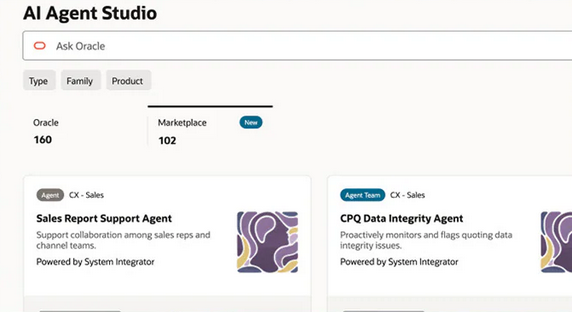Forget SEO: Welcome to the New Era of Generative Engine Optimization
The familiar rhythm of online shopping is about to change. For years, the journey from desire to purchase began with a few keywords typed into a search bar. This holiday season, however, a fundamental shift is underway. Instead of navigating a sea of blue links, more consumers will be having conversations with AI chatbots to find the perfect gifts, uncover the best deals, and guide their purchasing decisions. The age of Search Engine Optimization (SEO) is not ending, but its dominance is being challenged by a powerful new successor: Generative Engine Optimization (GEO).
The digital landscape is being reshaped by large language models (LLMs) like ChatGPT, and businesses are racing to understand the new rules of discovery. This isn’t just a fleeting trend; it’s the next evolution of digital marketing. As AI becomes the primary intermediary between brands and consumers, simply ranking on Google will no longer be enough. The new imperative is to be the authoritative, trusted voice in the AI’s answer. Welcome to the world of GEO.

The Tectonic Shift: From Search Queries to AI Conversations
The evidence for this transformation is compelling and growing daily. The conversational, intuitive nature of AI is proving to be a powerful tool for shoppers navigating a crowded marketplace. This shift is not theoretical; it’s a measurable phenomenon that is already impacting traffic and revenue.
According to a recent shopping report from Adobe, retailers could experience a staggering 520 percent increase in traffic originating from chatbots and AI-powered search engines this year compared to 2024.
This explosion in AI-driven traffic signals a profound change in consumer behavior. People are no longer just looking for a list of options; they are seeking curated recommendations, complex comparisons, and direct answers to highly specific questions. They want to know, “What is the best noise-canceling headphone for long flights under $300 that also has good battery life for calls?"—a query that is far more natural in a chat interface than a traditional search box.
Tech giants are aggressively moving to capitalize on this behavior. OpenAI, the creator of ChatGPT, recently announced a landmark partnership with retail behemoth Walmart. This integration will allow users to browse and purchase Walmart’s products directly within the ChatGPT interface, effectively transforming the chatbot from a discovery engine into a seamless point of sale. This move collapses the sales funnel, turning a simple conversation into a direct transaction and offering a glimpse into the future of e-commerce.
Decoding GEO: The Next Frontier in Digital Visibility
For decades, Search Engine Optimization (SEO) has been the cornerstone of digital marketing. It was a complex art and science dedicated to appeasing Google’s algorithms through keywords, backlinks, and content structure, all with the goal of securing a coveted spot on the first page of search results. Now, as AI models become the new gatekeepers of information, a new discipline has emerged to master them: Generative Engine Optimization (GEO).
GEO is the strategic process of creating and structuring content so that it is easily found, understood, and favored by large language models. The goal is to ensure that when a user asks a relevant question, the AI’s generated response includes, recommends, or is based on your brand’s information. It’s a direct evolution of SEO, built on the same foundational principle of understanding user intent, but adapted for a conversational, AI-mediated world.
This emerging field is already becoming a significant industry. The GEO cottage industry is projected to be worth nearly $850 million this year alone, according to one market research firm, a testament to how seriously brands are taking this paradigm shift. Many of the pioneers in GEO are seasoned SEO veterans who recognize that while the core goal remains—be the answer to the customer’s question—the tactics required to achieve it have fundamentally changed.
The Old Playbook vs. The New: Key Differences Between SEO and GEO
The strategies that led to success in the era of search engines are not the same ones that will win in the age of AI. While there is some overlap, the divergence is growing rapidly. Imri Marcus, CEO of the GEO firm Brandlight, has observed this change firsthand. He estimates that there used to be a 70 percent overlap between the top-ranking links on Google and the sources cited by AI tools. Today, he says, that correlation has plummeted to below 20 percent. This dramatic drop highlights the need for a completely new playbook.
Chatbots and search engines consume and prioritize information differently. Understanding these differences is the key to developing an effective GEO strategy.
| Strategy Element | Traditional SEO (Search Engine Optimization) | Generative Engine Optimization (GEO) |
|---|---|---|
| Primary Goal | Rank high on a Search Engine Results Page (SERP). | Be included as the authoritative source in an AI-generated answer. |
| Content Focus | Long-form, narrative articles often padded for word count and keyword density. | Factual, concise, and highly specific information that directly answers questions. |
| Optimal Format | Blog posts, articles, and landing pages designed for human readers and crawlers. | Structured data formats like bulleted lists, FAQ pages, and detailed tables. |
| User Query Style | Shorter, keyword-based searches (e.g., “best running shoes”). | Complex, conversational, long-tail questions (e.g., “what are the best running shoes for a heavy runner with flat feet?”). |
| Key Metric | Page ranking, organic traffic, and click-through rate (CTR). | Brand mentions, inclusion in generated answers, and establishing “source authority.” |
| Authority Signal | Backlinks from other high-authority websites. | Factual accuracy, consistency across platforms, and clarity of information. |
This table illustrates a fundamental shift in priorities. SEO often rewarded verbosity; think of the lengthy personal anecdotes that precede a simple recipe online. GEO, in stark contrast, rewards clarity, structure, and precision.
Mastering the Art of GEO: Actionable Strategies for Brands
As brands pivot from an SEO-centric to a GEO-first mindset, they must adopt new content strategies tailored for machine consumption. The goal is to make your information as digestible and trustworthy as possible for an AI. Here are the core strategies driving success in this new landscape.
1. Embrace Structured Data
AI models thrive on order. They are designed to parse data efficiently, and simple, well-organized information is far more valuable to them than dense, narrative prose. “An FAQ can answer a hundred different questions instead of one article that just says how great your entire brand is,” explains Brandlight’s Imri Marcus. “You essentially give a hundred different options for the AI engines to choose.”
- Implement FAQ Pages: Create comprehensive FAQ sections that address every conceivable question a customer might have about your products, services, and industry.
- Use Bullet Points and Lists: Break down complex features, benefits, or processes into simple, scannable bullet points.
- Leverage Tables: For product comparisons or technical specifications, tables provide a clear, structured format that an LLM can easily interpret and relay to a user.
2. The Power of Granularity
The questions users ask chatbots are often incredibly specific. Generic marketing content that tries to be everything to everyone will fail to register. To succeed in GEO, brands must create a deep library of content that addresses niche, granular queries.
As Marcus notes, “No one goes to ChatGPT and asks, ‘Is General Motors a good company?’” Instead, they ask if the Chevy Silverado or the Chevy Blazer has a longer driving range. Answering these hyper-specific questions positions you as the expert. “Writing more specific content actually will drive much better results because the questions are way more specific,” he adds. This requires a shift from broad-stroke brand messaging to a detailed, encyclopedic knowledge base about your own offerings.
3. Build an “Authoritative Source” Moat
In the world of GEO, your brand’s entire digital footprint contributes to its authority. LLMs are designed to synthesize information from countless sources to determine what is true and reliable. To become an authoritative source, a brand must ensure its product information is consistent, accurate, and readily available everywhere.
This means aligning the data on your website, in your press releases, on third-party retail sites, and in technical documentation. Consistency builds trust with the AI, making it more likely to cite your information as the definitive answer.
4. The Paradox: Using AI to Feed AI
To create the vast amount of granular, structured content required for a successful GEO strategy, many companies are, perhaps ironically, turning to AI itself. AI content generation tools can help produce detailed product descriptions, FAQ answers, and technical specifications at a scale that would be impossible for human teams alone.
However, this comes with a critical caveat. “At the beginning, people speculated that AI engines will not be training on AI content,” Marcus says. “That’s not really the case.” While AIs are consuming AI-generated content, a brand cannot afford to let its own AI hallucinate or present inaccurate information. The content must be rigorously fact-checked and edited by human experts to ensure it meets the highest standards of accuracy and authority. The role of the human is to guide the AI, not be replaced by it.
Industry Giants on the GEO Frontier
This strategic pivot is not just for small, nimble startups. Some of the world’s largest companies are already retooling their digital marketing efforts for the age of AI. Brandlight’s client roster, which includes titans like LG, Estée Lauder, and Aetna, shows that this is a mainstream imperative.
For a company like Estée Lauder, the implications are profound. Brian Franz, the company’s Chief Technology, Data and Analytics Officer, emphasizes the need to adapt to how AI consumes information. “Models consume things differently,” he states. “We want to make sure the product information, the authoritative sources that we use, are all the things that are feeding the model.”
For now, the focus is less on immediate sales conversions and more on winning the crucial battle for brand awareness in this new channel. It’s about ensuring that when a user asks ChatGPT, “What should I put on my skin after a sunburn?” an Estée Lauder product is part of the AI’s trusted recommendation. The immediate return on investment (ROI) is secondary to establishing a presence in these formative stages.
“Right now, in this really early learning stage where it feels like it’s almost going to explode, I don’t think we want to look at the ROI of a particular piece of content we created,” Franz says. When asked if he would consider a direct shopping integration with OpenAI, similar to Walmart’s, his response was immediate and unequivocal: “Absolutely.”
The Future of Discovery: Navigating the GEO Landscape
The rise of GEO marks a permanent change in the relationship between brands and consumers. The internet is transitioning from a library of documents to be searched into a web of intelligences to be consulted. This new reality presents both immense opportunities and significant challenges.
The path forward involves a deep commitment to creating content that is truthful, structured, and hyper-relevant. It requires brands to think less like advertisers and more like encyclopedists, building a comprehensive and authoritative knowledge base that can reliably inform AI models. The cat-and-mouse game that defined the SEO era will continue, but the rules of engagement have been rewritten.
The brands that will thrive in the coming decade are those that recognize this shift today. They are the ones investing in structured data, granular content, and unwavering factual accuracy. Clinging to the old SEO playbook alone is a recipe for invisibility. The future of digital discovery is conversational, and the key to unlocking it lies in mastering the principles of Generative Engine Optimization. The conversation has already started—the only question is whether your brand will be a part of it.








Comments